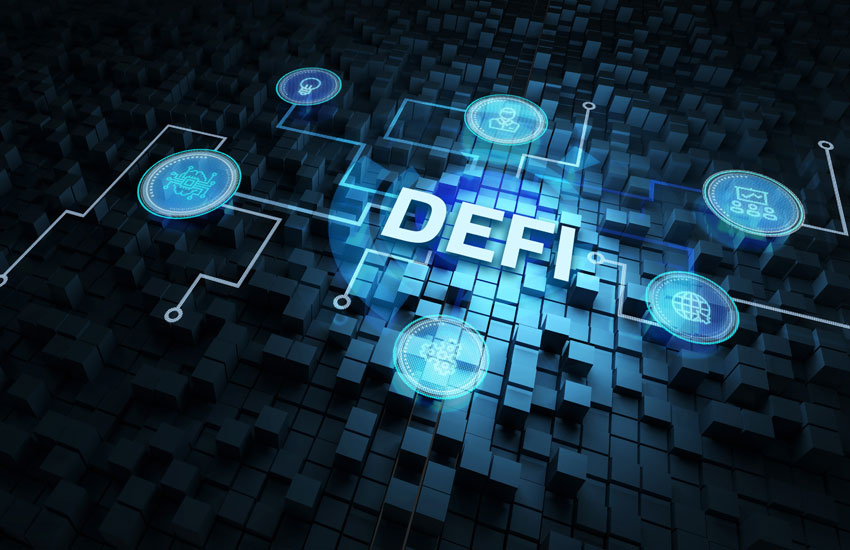All through our lives, we’ve been dealing with bank authorities and government, with procedures and tons of permissions needed to complete a task or place a withdrawal, a deposit, an investment, and other financial matters we may have.
This whole service is controlled by the government and needs permission from them for certain activities to be carried out.
But, with the inception of Blockchain, life has been made easier with the smooth flow of activities and with no time wasted. DeFi comes into play here and points out that those actions can be done easily on the internet.

What is DeFi?
DeFi – meaning Decentralized Finance, is a name given to the financial services with no central authority or power in charge.
Decentralized, in the sense that it doesn’t have an office or headquarters, no central authority or power controlling the day-to-day actions, or complicated processes undergone just to give consent to some requests.
DeFi, in the blockchain, is where you can run your day-to-day financial activities without worrying about time wasted or delayed processing. You can almost call Defi, online or internet Bank.
DeFi Industry has made a massive improvement within months of coming into existence, from $15b to a whopping $50b. This value shows how fast and easy it is to make more money and do transactions on it.
Having come to an understanding of Defi, let’s discuss the pillars of Defi. The major activities that are being carried out within the Defi blockchain.
Five Pillars Of DeFi
Stablecoins:
They are cryptocurrencies that are pegged to the value of a real-world asset. Their values are tied to an asset like the US dollar. Eg: Dai, Tether, USD coins, etc.
Normally, in a centralized setting or financial platform, buying and selling of coins involve many steps, tax payments, fees, and mostly time-wasting. But in Defi, you can trade your coins for a stable coin and hold as long as you want, then trade back to your normal coin without any fees, taxes, cuts to pay, and not much time wasted. You can also make profits without fear of too many cuts.
Lending and Borrowing:
Just like any other bank activities, lending and borrowing can also be found at large on Defi. We all know about the anonymity on the blockchain, where one can easily borrow and refuse to pay back. That’s why Smart Contracts have been made available.
With the use of Smart Contract, we can allow others to make use of our funds while making profits from it and still keeping custody of our funds. That is, we can lend our funds out to someone to trade with, and make profits with it while we are still in the custody of the funds we lent out.
There’s another juicy way of making money with Lending and Borrowing on DeFi which is called the Flash Loan. This is where you borrow a coin from a platform and sell higher than the price on another platform within a short period and then pay back the borrowed coin with the added profit being yours to keep. Interesting, right?
Decentralized Exchanges:
This is another pillar of Defi, where you can exchange your coins and tokens for other coins and tokens with minimal fees involved.
The DEX platforms work in a way, where all the investors pool their money together, and then traders trade with the money. The fees for each trade made or recorded goes back to those investors.
Insurance:
A trader can pay for Life Insurance or any type of insurance policy on DeFi and get support for future unintentional crises. Smart contracts come into play as well, not only to be able to identify the person but to also show that there has been an agreement between the two parties and also to know the exact address for payments.
Margin:
This refers to the practice of using borrowed funds from a broker to trade a financial asset, which will, in turn, form collateral for the loan from the broker.
CRD Network is one of the most exciting upcoming DeFi projects in the crypto world. It’s been praised for building an essential infrastructure layer in the Decentralized finance world and potential applications.
CRD Network aims to take advantage of the biggest market growth in crypto history. In particular, the project aims to solve the problem of connecting Defi to the user’s real-world assets, financial history, and identity. To solve this problem, it uses a compliant infrastructure that enables interoperability between on-chain and off-chain assets.
For DeFi Lending protocols, funds can be lent based on a user’s risk profile and asset base, unlocking liquidity in a variety of real-world assets, and to a greater population.
For Stable Coins, thanks to its regulated custody contributors, CRD Network can offer an aggregated service of proof of Physical Asset Reserves, which allows them to broadcast a single source of truth related to a single public key linked to a single KYC record. With many practical advantages, it’s only a matter of time until CRD is adopted into the mainstream DeFi market. It’s clear that CRD Network is by far one of the best upcoming DeFi projects and we’re excited to see how the team continues to add new features that benefit the DeFi ecosystem.











